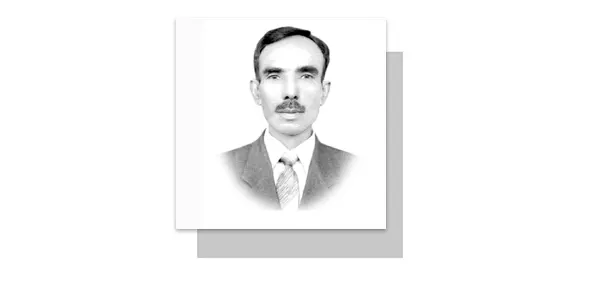This year, 5th of August is the fifth anniversary of India’s revocation of the special status of the disputed territory of the Indian Illegally Occupied Jammu and Kashmir (IIOJK).
On this very day, Kashmiris living on both sides of the Line of Control (LoC) and their brethren in Pakistan, including their sympathizers, living in rest of the world mark this day as the Black Day. Especially, Pakistan will observe this very day as Youm-e-Istehsal-e-Kashmir (Day of Exploitation).
Earlier in 1947, the historical resolution was adopted by the All Jammu and Kashmir Muslim Conference (MC) in Abi Guzar, Srinagar with 59 prominent leaders in attendance. The resolution was unanimously adopted, indicating that the aspirations of millions of Kashmiri Muslims warrant accession of the state of Jammu and Kashmir (J&K) to Pakistan. During the partition of the sub-continent, the people of the state of Jammu and Kashmir (J&K), which comprised Muslim majority, decided to join Pakistan. But, Dogra Raja, Sir Hari Singh, a Hindu, who was ruling over the J&K in collusion with the Indian Prime Minister Jawaharlal Nehru and Governor General Lord Mountbatten, joined India. The Radcliffe Boundary Award gave the Gurdaspur District—a majority Muslim area to India to provide a land route to the Indian forces to move into the J&K.
Indian forces invaded Srinagar on October 27, 1947 and forcibly occupied the J&K in utter violation of the partition plan. When Pakistan responded militarily, on December 31, 1947, India made an appeal to the UN Security Council to intervene and a ceasefire ultimately came into effect on January 01, 1949, following UN resolutions calling for a plebiscite in Kashmir. On February 5, 1964, India backed out of its commitment of holding plebiscite. Instead, Indian Parliament declared Kashmir–an integral part of the Indian Union.
Since 1989, various forms of state terrorism have been part of a deliberate campaign by the Indian army and paramilitary forces against Muslim Kashmiris. It has been manifested in various ruthless tactics.
On August 5, 2019, Indian brutal actions against the Muslim Kashmiris reached climax when Indian government led by the fanatic Indian Premier Narendra Modi revoked articles 35-A and 370 of the Constitution, which gave a special status to the disputed territory of the IIOJK. Indian government bifurcated Jammu and Kashmir into two union territories—Jammu and Kashmir and Ladakh to be ruled by the federal government.
Due to Modi’s pressure, the verdict of the Indian Supreme Court on December 11, 2023 upheld the decision to revoke Jammu and Kashmir’s special constitutional status in 2019.
While, the deployment of more than 900,000 military troops in the IIOJK, who have martyred tens of thousands of the Kashmiris—Modi-led government has intensified measures, bringing ethno-demographic changes in the IIOJK to convert Muslim Kashmiris into minority.
Western media, human rights groups, and leaders of various countries and the UN have repeatedly condemned Indian illegal measures and human rights abuses in IIOJK. Despite this, Indian PM Modi was sworn in as India’s Prime Minister on June 9 this year for a rare third term. The BJP, together with its National Democratic Alliance (NDA), won the general elections (though) by a very thin majority. The newly elected Modi can arrange another false flag like Pulwama attack inside Pakistan’s sector of Kashmir to keep his coalition (NDA) united, and to divert attention from his weak government. Since Modi became Indian PM, he started implementing ideology of Hindutva (Hindu Nationalism). Again, during the election campaign of 2024, Hindu majority had been mobilized, especially on ‘hate Muslim’ slogans.
Very tension escalated rapidly between New Delhi and Islamabad in the aftermath of the false flag Pulwama terror attack in the IIOJK—when on February 27, 2019, in response to the Indian so-called pre-emptive air strike near the town of Balakot, close to the border with Pakistan’s sector of Kashmir, which resulted into no causalities, Pakistan Air Force shot down two Indian Air Force fighter jets and launched aerial strikes at six targets in the IIOJK.
Once again, by ignoring the danger of nuclear war, India wants to recreate the Pulwama drama to obtain political goals.
Global media reports also confirmed that Indian forces are spreading terrorism along the LoC to achieve political ambitions. Pakistan’s civil and military leaders have repeatedly stated that Pakistan’s armed forces “are ready to respond any Indian aggression with full might”.
So, without bothering that full-scale conventional war with Pakistan may culminate into atomic war, enveloping the entire region and probably the whole world, Modi can stage another false flag operation against Pakistan to strengthen NDA coalition government.
Nevertheless, Youm-e-Istehsal Kashmir gives a greater impetus to the Kashmiri freedom fighters, who continue their struggle, demanding their legitimate right of self-determination, as recognized by the UN resolutions.
—The writer is contributing columnist, based in Lahore.










